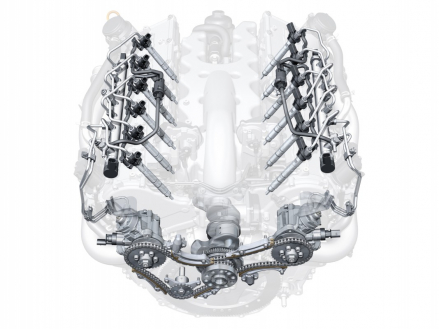Common rail
For engine design engineers, the “rail” in a common rail system is a tubular high-pressure accumulator that maintains a supply of fuel at a constant high pressure. The rail is fed by a pump driven by the timing gear. The injectors are connected to the common rail by short steel pipes, and opened and closed by electrical impulses.
Common rail fuel injection is the only technology that separates the pressure build-up and injection processes. Whereas all other systems build up pressure successively for each injection stroke, the common rail system uses a high pressure pump that essentially stores a reservoir of fuel at high pressure. Therefore, the injection parameters can be freely controlled, giving engine developers the freedom to divide the injection event up into a number of individual injections taking place during each engine revolution. Pilot injections before the piston reaches top dead center in the cylinder allow fuel pressure to be built up gradually, so that combustion is quieter. Post-injections reduce emissions and are also used to regenerate the particulate filter.
Common rail systems currently achieve system pressures of up to 2,000 bar (29,008 psi). They normally work together with a fuel pre-delivery unit. For its latest-generation common rail system, Audi uses a high-efficiency, non-contact volumetric-flow-controlled pump in the tank.
Status: 2011
